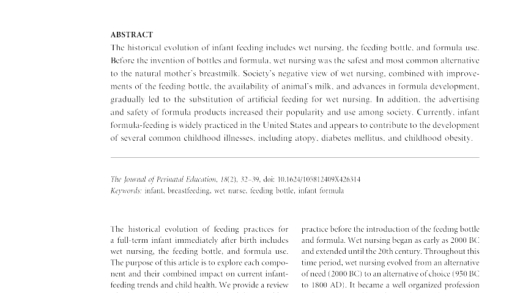This article discusses cat bleeding, covering causes, first aid steps, signs of serious injury, and prevention strategies. It emphasizes recognizing symptoms and knowing when to seek veterinary care.
Common Causes of Cat Bleeding
Cat bleeding can arise from various causes, each necessitating prompt attention. Common reasons for cat bleeding include injuries, diseases, and parasites.
- Injuries: Scrapes, cuts, or punctures from sharp objects can lead to bleeding. This is often due to fights with other animals or accidents.
- Diseases: Certain conditions like clotting disorders can cause spontaneous bleeding. Conditions such as hemophilia may not be immediately obvious.
- Parasites: Fleas and ticks can cause skin irritations that may bleed. Additionally, internal parasites can lead to more severe health issues that might result in bleeding.
Understanding these causes helps in recognizing potential dangers for your cat. Regular veterinary check-ups can also aid in early detection of underlying diseases.
How to Tell if Your Cat is Seriously Injured
Recognizing serious injuries in your cat is crucial. Certain signs indicate that immediate veterinary care is necessary. Look for:
- Excessive Bleeding: If the bleeding is profuse and does not stop, it is a serious concern.
- Behavior Changes: Signs of distress, such as hiding, aggression, or excessive vocalization, may indicate pain.
- Weakness or Lethargy: A cat that is unusually weak or unresponsive may be suffering from a serious condition.
Being vigilant about these symptoms can save your cat’s life. If you observe any of these signs, it is critical to seek veterinary assistance immediately.
Immediate Steps for a Bleeding Cat
When faced with a bleeding cat, swift action is vital. Here are the immediate steps you should take:
- Stay Calm: Your cat can sense your stress. Remaining calm helps you manage the situation effectively.
- Apply Pressure: Use a clean cloth or bandage to apply direct pressure to the wound. This can help control the bleeding.
- Keep the Cat Still: Movement can exacerbate bleeding. Try to keep your cat as still as possible.
- Transport to Vet: If the bleeding does not stop within a few minutes, take your cat to the vet.
These steps can stabilize your cat until professional help is available. Quick responses can significantly improve outcomes in bleeding situations.
How to Apply Pressure to a Cat Wound
Applying pressure to a cat wound is essential to control bleeding effectively. The first step is to locate the source of the bleeding. Once identified, use a clean cloth or bandage to apply firm, direct pressure on the wound. Make sure to hold the pressure for at least five to ten minutes without lifting the cloth to check if the bleeding has stopped. If the cloth becomes soaked, do not remove it; simply place another cloth on top. This technique helps prevent further blood loss.
In cases where the wound is on a limb, elevating the limb can also assist in reducing blood flow to the area. Avoid using a tourniquet unless absolutely necessary, as this can cause further damage to the tissue. Instead, focus on consistent pressure and keeping your cat calm during the process. Remember, if the bleeding persists despite applying pressure, seeking veterinary assistance is crucial.
When to Take Your Cat to the Vet for Bleeding
Knowing when to take your cat to the vet for bleeding is vital for their health. If your cat experiences excessive bleeding that does not stop after applying pressure for ten minutes, it’s time to visit the vet. Other indicators include:
- Deep Wounds: If the wound appears deep or is caused by a bite, professional evaluation is necessary.
- Signs of Shock: Symptoms such as rapid breathing, pale gums, or weakness require immediate veterinary care.
- Infection Signs: If you notice swelling, pus, or a foul odor from the wound, it could indicate an infection.
Prompt action in these situations can significantly impact your cat’s recovery. Always trust your instincts; if you feel uncertain, it’s best to consult a veterinarian.
Signs of Shock in a Bleeding Cat
Recognizing signs of shock in a bleeding cat is critical. Shock can occur when the body is not getting enough blood flow, which can be life-threatening. Key signs to look for include:
- Rapid Heart Rate: An increased heart rate is a common response to shock.
- Pale or Bluish Gums: Check your cat’s gums; they should be pink. Pale or bluish gums indicate poor circulation.
- Weakness or Lethargy: A cat that seems unusually tired or unable to stand may be in shock.
If you observe these symptoms, it is crucial to seek immediate veterinary help. Shock can worsen rapidly, and timely intervention can save your cat’s life.
Types of Wounds in Cats and Their Treatments
Understanding the types of wounds in cats is essential for effective treatment. Wounds can vary significantly in severity and type, requiring different approaches for care. Here are some common types:
- Superficial Wounds: These include minor cuts or scrapes that typically do not penetrate deep into the skin. Treatment involves cleaning the wound with mild soap and water, applying an antiseptic, and covering it with a bandage to prevent infection.
- Puncture Wounds: Often caused by bites or sharp objects, puncture wounds can introduce bacteria deep into the tissue. It’s crucial to seek veterinary care for these injuries, as they may require drainage or antibiotics.
- Deep Lacerations: These wounds may involve more than just the skin and can damage underlying tissues. Immediate veterinary attention is necessary. Do not attempt to stitch or close these wounds at home.
- Burns: Burns can result from heat, chemicals, or electrical sources. Cooling the area with running water and seeking veterinary care is vital. Do not apply ointments or creams without professional guidance.
Proper treatment depends on recognizing the type of wound. Always err on the side of caution and consult a veterinarian for more severe injuries.
Using Human First Aid Supplies on Cats
Many cat owners wonder about the safety and effectiveness of using human first aid supplies on their pets. While some supplies can be beneficial, others may pose risks. Here’s a breakdown:
- Bandages: Human bandages can be used, but ensure they are not too tight, as this can restrict blood flow.
- Antiseptics: Some antiseptics designed for humans can be harmful to cats. Always opt for pet-safe products.
- Gauze Pads: These are useful for applying pressure to a wound and can be used effectively.
- Adhesive Tape: This can help secure dressings, but avoid using strong adhesives that may irritate the cat’s skin.
Always check with your veterinarian before using human supplies on your cat. They can advise on safe practices and alternatives.
Avoiding Common Mistakes When Treating a Bleeding Cat
When treating a bleeding cat, it’s crucial to avoid common mistakes that can worsen the situation. Here are key points to remember:
- Not Applying Enough Pressure: Insufficient pressure on the wound may not control bleeding effectively. Apply firm pressure consistently.
- Using Home Remedies: Avoid using unverified home remedies, as they can cause more harm than good.
- Ignoring Signs of Shock: Failing to recognize shock symptoms can delay necessary treatment. Be vigilant for rapid breathing and pale gums.
- Delaying Veterinary Care: If in doubt, don’t hesitate to take your cat to the vet. Time is critical in managing injuries.
By being aware of these mistakes, cat owners can provide better initial care and improve their pet’s chances of recovery.
Preventing Future Injuries in Cats
Preventing injuries is essential for maintaining your cat’s health. Here are some effective strategies to keep your feline friend safe:
- Supervise Outdoor Time: If your cat goes outside, supervise their activities to prevent fights or accidents with vehicles.
- Provide Safe Spaces: Ensure your home has areas where your cat can retreat safely from stress or potential harm.
- Regular Veterinary Check-Ups: Routine examinations can identify health issues that may predispose your cat to injuries.
- Secure Hazardous Areas: Keep sharp objects, toxic plants, and chemicals out of reach to minimize risks.
Implementing these prevention strategies can significantly reduce the likelihood of injuries and enhance your cat’s overall well-being.





Comments are closed.